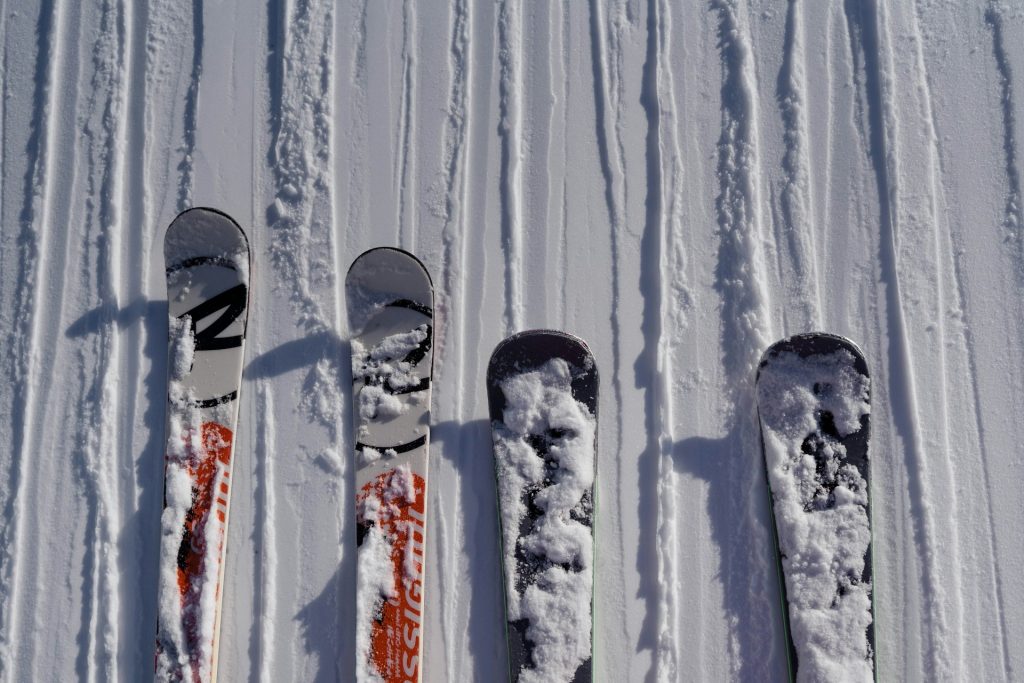Let’s be honest: ski sizing can feel like one big shrug. You get a vague chart, a bunch of ranges, and somehow you’re just supposed to know what works?
That’s why we built this guide. We’re skiers. We’ve worked in ski shops, we’ve made sizing mistakes, and we’ve helped hundreds of people figure out the right length skis for how they actually ride.
So if you’re wondering what size skis to get, let’s break it down. No fluff, no sales pitch. Just real advice to help you dial in your setup.
Start Here: Use the Ski Size Calculator
If you want a fast recommendation based on your stats, use our ski size calculator. It factors in height, weight, skill level, and ski style - all of which matter more than most people think.
But if you want to understand the why behind ski sizing, keep reading.
How Ski Sizing Actually Works
Ski sizing isn’t one-size-fits-all. It depends on four key things:
- Your height – Taller skiers generally need longer skis.
- Your weight – Heavier skiers flex skis more, so size and stiffness both matter.
- Your ability – Beginners usually benefit from shorter skis for control. Advanced skiers often size up for speed and float.
- Your ski style – Park, all-mountain, powder, carving—each rides differently at the same length.
The “right” size is the length that balances stability, control, and fun for you. And it’s more flexible than most sizing charts make it seem.

Height vs Weight: Which Matters More?
Most ski charts are based on height, but we’ll let you in on a secret: weight is actually more important when it comes to how a ski behaves.
Why? Because your weight is what flexes the ski. A heavier skier on a short, soft ski will overpower it. A lighter skier on a long, stiff ski might barely get it to turn. You're also counting on your ski edges to (hopefully) hold your weight when turning or stopping. Going too short = wipeouts!
So don’t just go by height. Check both. Use your style and ability to adjust from there.
How Ability Affects Ski Length
This one’s big. Your skill level changes what you can handle and what actually feels fun.
- Beginners: Go shorter. Easier to turn, less likely to punish mistakes.
- Intermediates: Go mid-range. More stable, but still manageable.
- Advanced/Expert: You can size up. Longer skis offer speed, float, and edge hold (if you can handle them).
Bonus tip: ability isn’t just about how fast you go. It’s also about edge control, terrain choice, and how confidently you handle different conditions. Be honest with yourself. It helps.
Ski Style Changes Everything
Same skier, different ski = different size. Here’s how:
- All-Mountain: Stick to your recommended size. These skis are designed to be versatile.
- Park: Go a little shorter for spins and control—or stick mid-range if you hit big jumps.
- Powder: Size up. More surface area = more float. Rocker helps too.
- Carving/Groomers: Size for edge control. Slightly shorter if you're not racing gates.
- Backcountry/Touring: Match your downhill style, but consider weight and uphill efficiency.
Don’t just look at the length—pay attention to the shape and rocker profile too. A 180cm ski with a ton of tip rocker might ride more like a 172. That’s why some pow skis are “cheater long”... they’re big, but easy to handle.
Real Talk: What Happens If You Choose the Wrong Size?
If your skis are too short, they’ll feel squirrely at speed and won’t float in powder. If they’re too long, they’ll feel like a bus - slow to turn, harder to control in tight spots.
But the sweet spot is bigger than you think. Most riders can go up or down 5cm and still be fine - especially if the flex, width, and profile suit your needs.
When in doubt, use our calculator - and trust your gut. If you’ve ridden a 170 and it felt perfect, don’t let a chart tell you that you have to size up.
Real Talk: Don't listen to old people!
The conventional advice about holding skis up and "sizing to your nose" or even "to the chin for beginners" is total crap.
As you know, this ignores really important factors like weight, riding style, flex ratings etc. But that still doesn't seem have stopped old school ski shops from doing it (you know who you are!)
Final Thoughts
Ski sizing isn’t an exact science. It’s a mix of body mechanics, ski design, and riding style. That’s why we built SkiSizeCalculator.com in the first place - to cut through the vague advice and help you find your real size.
Use the calculator, trust your feel, and if you’re between sizes, lean into your style and experience. You’ve got this.

